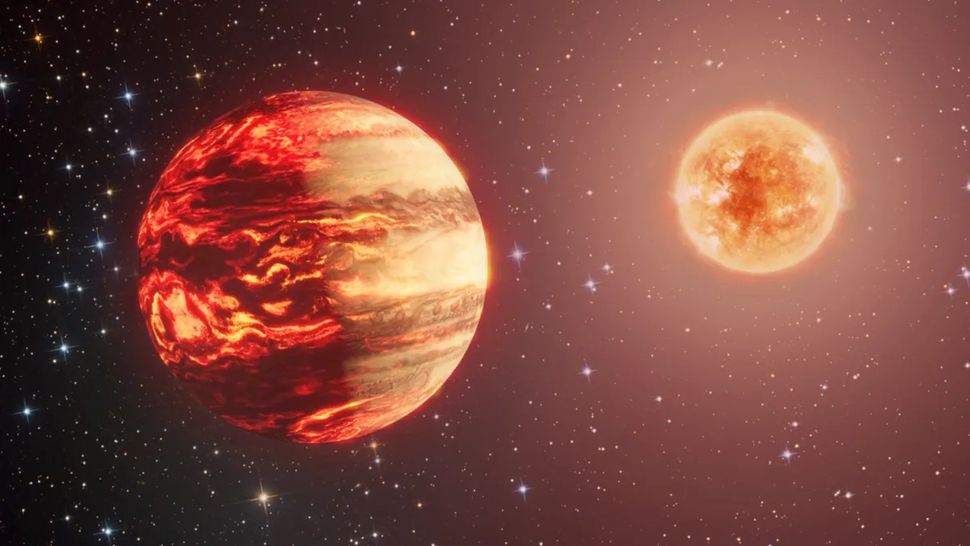Gaia space telescope helps astronomers image hidden objects around bright stars
By Robert Lea published 7 hours ago
The Gaia space telescope has spotted the dim companions of eight bright stars, suggesting we can expect new glimpses of distant planets.

A brown dwarf orbits a bright star in this illustration. (Image credit: ESA)
Scientists have directly imaged eight dim objects accompanying very bright stars within the Gaia data catalog, including so-called "failed stars," otherwise known as brown dwarfs.
The stars and their companions were originally identified from millions of stars in the Gaia catalog. They were considered ideal for follow-up investigations with the ground-based GRAVITY instrument, an advanced near-infrared interferometer located at the Very Large Telescope (VLT) on the peak of Cerro Paranal in Chile. By combining infrared light from multiple telescopes, a process called interferometry, GRAVITY has already achieved the first direct observation of an extrasolar planet, or "exoplanet."
Following up on Gaia observations, GRAVITY directly spotted light signals from companions around the eight bright stars, seven of which were theorized objects, undiscovered until now.
Three of the companion objects are small and faint stars, and the other five are brown dwarfs. The latter form like stars and have more mass than gas giant planets, but don't have enough mass to trigger the fusion of hydrogen to helium in their cores like main-sequence stars do. That's where their nickname "failed stars" comes from.
More:
https://www.livescience.com/space/exoplanets/gaia-space-telescope-helps-astronomers-image-hidden-objects-around-bright-stars
